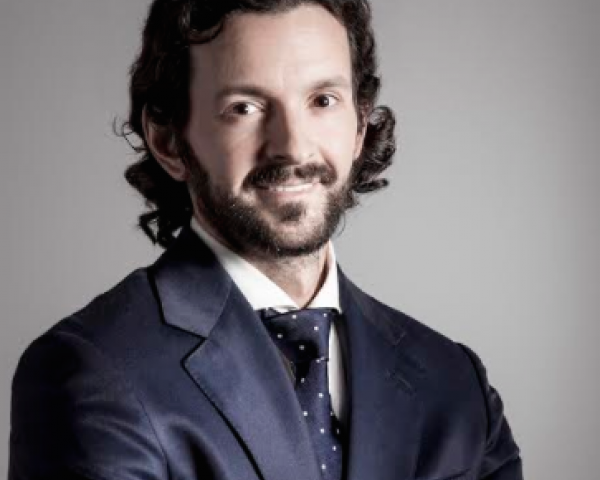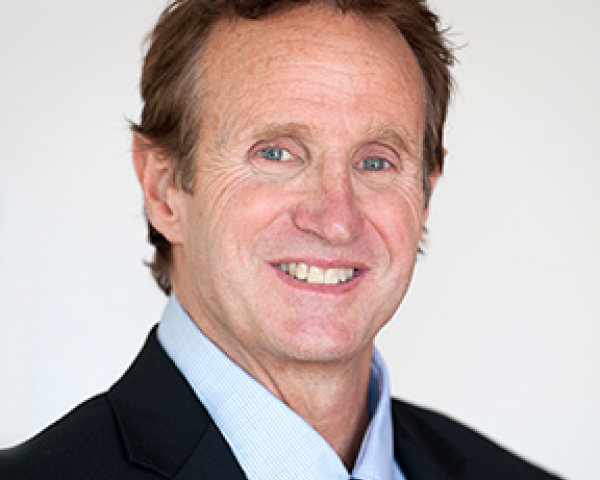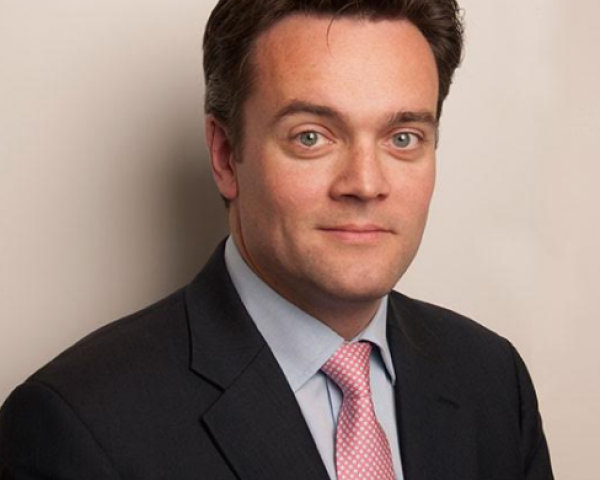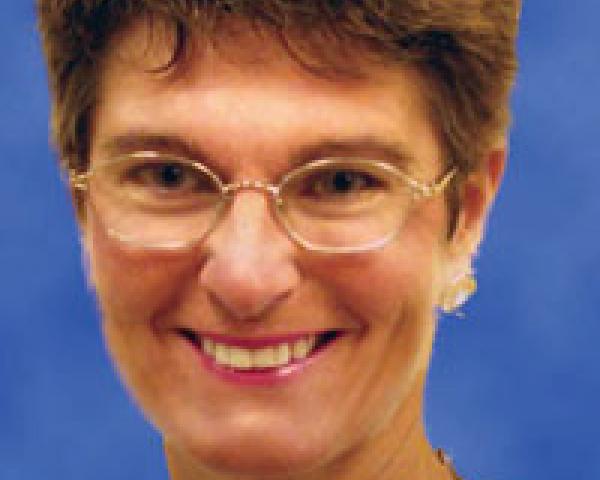6 Areas to Watch in a D&O Review
While much language has remained fairly constant, here are six areas of new or renewed interest for buyers and their brokers.

While much language has remained fairly constant, here are six areas of new or renewed interest for buyers and their brokers.

Get Involved
Our authors are what set Insurance Thought Leadership apart.
|
Partner with us
We’d love to talk to you about how we can improve your marketing ROI.
|

Evan Bundschuh is a vice president at GB&A.
It is a full-service commercial and personal independent insurance brokerage with a special focus on professional liability (E&O), cyber and executive/management liability (D&O).
Here is a three-part plan for the life insurance industry that may solve a marketplace and social problem hiding in plain site.

Get Involved
Our authors are what set Insurance Thought Leadership apart.
|
Partner with us
We’d love to talk to you about how we can improve your marketing ROI.
|

Amy Radin is a transformation strategist, a scholar-practitioner at Columbia University and an executive adviser.
She partners with senior executives to navigate complex organizational transformations, bringing fresh perspectives shaped by decades of experience across regulated industries and emerging technology landscapes. As a strategic adviser, keynote speaker and workshop facilitator, she helps leaders translate ambitious visions into tangible results that align with evolving stakeholder expectations.
At Columbia University's School of Professional Studies, Radin serves as a scholar-practitioner, where she designed and teaches strategic advocacy in the MS Technology Management program. This role exemplifies her commitment to bridging academic insights with practical business applications, particularly crucial as organizations navigate the complexities of Industry 5.0.
Her approach challenges traditional change management paradigms, introducing frameworks that embrace the realities of today's business environment – from AI and advanced analytics to shifting workforce dynamics. Her methodology, refined through extensive corporate leadership experience, enables executives to build the capabilities needed to drive sustainable transformation in highly regulated environments.
As a member of the Fast Company Executive Board and author of the award-winning book, "The Change Maker's Playbook: How to Seek, Seed and Scale Innovation in Any Company," Radin regularly shares insights that help leaders reimagine their approach to organizational change. Her thought leadership draws from both her scholarly work and hands-on experience implementing transformative initiatives in complex business environments.
Previously, she held senior roles at American Express, served as chief digital officer and one of the corporate world’s first chief innovation officers at Citi and was chief marketing officer at AXA (now Equitable) in the U.S.
Radin holds degrees from Wesleyan University and the Wharton School.
To explore collaboration opportunities or learn more about her work, visit her website or connect with her on LinkedIn.
Repealing the law outright would cause chaos in the health insurance marketplace and take coverage away from millions of consumers.

Get Involved
Our authors are what set Insurance Thought Leadership apart.
|
Partner with us
We’d love to talk to you about how we can improve your marketing ROI.
|
While cybersecurity threats should keep brokers on their toes, they don’t have to transform you into a tech-fearing Luddite.

Get Involved
Our authors are what set Insurance Thought Leadership apart.
|
Partner with us
We’d love to talk to you about how we can improve your marketing ROI.
|
A simple risk-profiling tool lets insurers better assist employers in managing their workers' compensation costs and impacts.


Get Involved
Our authors are what set Insurance Thought Leadership apart.
|
Partner with us
We’d love to talk to you about how we can improve your marketing ROI.
|

Peter Blackmore is a founder of Risk Advisor, which has established a fully operational interactive digital platform that makes risk management easy for small to medium-sized enterprises around the world. He has been a strategic risk adviser for many years.
Many do not appreciate how the structure of an insurer can be an important consideration in a purchasing decision.

If you own or rent property; drive a car; or have cherished valuables, you are no doubt familiar with the intricacies — and, often, maddening complexities — of property and casualty (P&C) insurance. Nevertheless, most policyholders regard the purchase of insurance to be a necessary and prudent expense; however, many buyers do not appreciate how the structure of an insurer can be an important consideration in the buyers' purchasing decision and, ultimately, financial well-being.
Conventional insurance companies are typically organized around two common business structures: stock companies, which are owned by shareholders, and mutual companies, which are owned by policyholders. A third variant, the so-called reciprocal inter-insurance exchanges, or "reciprocals" for short, retain attributes of both.
A reciprocal is an unincorporated risk-pooling alternative to stock or mutual insurance companies where the members, known as "subscribers," agree to an exchange of contracts of insurance among themselves — thereby attaining a preferred level of risk pooling and diversification to indemnify the other members. The subscribers are part of an association in which the amalgamated risks are exchanged to cross-insure each other. A reciprocal is often likened to a partnership where each member is individually and severally liable, but, as is the case in — for example — a law firm, not jointly liable.
Organizational Structure of Reciprocals
A reciprocal, like a mutual insurer, is policyholder-owned but is typically administered by an independently owned managing agent called an "attorney-in-fact" (AIF). The AIF is a necessary aide-de-camp to a reciprocal and administers — in return for fees and commissions — its day-to-day operations, which include the signing of individual contracts, settling claims, establishing deposits and investing funds. The subscribers, through power of attorney or subscribers’ agreement (commonly contained in the same document) confer the authority, responsibilities and prerogatives to act on behalf of the subscribers. The AIF, while expected to maintain all and any underwriting standards, performs the role of an unbiased mediator to simplify and expedite transactions and may be an individual, partnership or corporation.
The organizational structure also includes a committee, known as a "subscribers advisory committee," (SAC) which represents all subscribers; supervises the AIF and the reciprocal's finances and operations; and acts in the subscribers' stead — except as limited by the power of attorney.
Many reciprocals are organized without any organic act other than power of attorney, which is used to set forth rights and obligations of the members, as well as the duties and powers of attorney.
Origin, Objectives and Definition of Reciprocals
The reciprocal insurance exchange can track its genesis to 1881, when six dry-good merchants in New York agreed to indemnify each other because of discontent with insurance companies. These merchants had buildings of superior construction and maintained them in good repair, but were charged premiums that did not mirror the potential losses for similar commercial buildings. Insurance companies of the time applied a broad brush in their classification of risk because sophisticated rate-setting techniques were only in their infancy. Being moreover well-capitalized to absorb certain losses, the merchants had the incentive -- and ability -- to "self-insure" to lower costs.
Reciprocals thus operate on the supposition that similarities and qualities within a specific grouping class establish a framework to achieve cost-saving for insuring specific risks that might otherwise not be properly rated by, for example, mutual insurance companies. The inherent homogeneity of reciprocals allows for an avoidance of being plodded together with a general underwritten community with uneven requirements and risk profiles, increasing the overall risk profile, premiums and profitability of traditional underwriters. Distinct groups of individuals or businesses generally have associated incentives to lower their exposure and increase their safety, thus producing a superior loss ratio. Although a reciprocal can lower the total cost of insurance over time, the structure can also create unique conflicts of interest between policyholders and the AIF.
Fundamentally, like any successful insurance company, premiums charged must cover all claims and expenses. A reciprocal is, therefore, a homogeneous association of individuals, partnerships or corporations with well-aligned interested and insurance requirements, vested under the terms of a common written agreement that is signed by each of the subscribers. The agreement provides that each subscriber, being a co-insured member, is protected by the other members; the purpose is to make each member whole at a cost, wherein no additional modifications within the association can reduce the total cost to the individual members over the period of their membership.
What you need to know
Like stock and mutual insurance companies, successful reciprocals pledge to be around for the long run, to process and pay claims and to provide affordable and consistent insurance coverage to their affinity groups. However, not all reciprocal insurers can keep their promises. When looking to sign up for a policy with a reciprocal insurer, you might want to ensure it meets some basic criteria:
Reciprocals are often marketed as "policyholder owned," but their commercial mindset and culture will most likely reflect the owners of the AIF. For instance, if the AIF is owned by a stock insurance company, it will most likely have underwriting capabilities and return hurdles in line with the insurance industry. AIFs backed by private equity are likely to have the most aggressive return expectations for their investors with the shortest investment horizons, creating uncertainty related to possible material changes in control when a PE firm eventually unwinds its investment. Publicly traded AIFs are typically obliged to provide transparent disclosures and have return expectations commensurate with investors of insurance brokers and service companies.
A separately owned management company creates a conflict of interest as profitable fees are generated at the expense of exchange members. A study by Emilio Venezian of Rutgers University, which examined the arrangement and practical implications of AIF management firms, confirmed this. Venezian concluded that serious problems might arise in the management of reciprocals if the AIF holds direct sway over the managers' own remuneration rates, because the incentive to increase their own private welfare may become a priority above —and at the expense of — the subscribers'.
This potential conflict has resulted in several lawsuits brought by reciprocal members against AIFs, claiming a lapse of their fiduciary duties by mismanagement or excessive fees being paid to the AIF. This conflict is even more apparent when the AIF or its shareholders generate interest income through debt provided to the reciprocal or when reciprocal assets are used to invest in affiliates of the AIF or its shareholders. Prospective subscribers are to ensure the AIF has clearly disclosed and quantified all related party transactions when considering the credibility of an AIF.
The most important requirement for any insurance entity is that the premiums charged are adequate to cover claims and expenses. For reciprocals, this includes AIF fees, reinsurance and interest. A prudently managed reciprocal will generate a profit that can either be retained or returned to policyholders depending on capital needs.
Net income and return on members' capital is the ultimate indication of how efficiently members' capital is managed by the AIF, because poor underwriting or investment performance will erode member capital over time. A high expense ratio may indicate the charging of excessive fees by the AIF or a failure in operating the exchange efficiently. Premium growth should never be at the expense of sensible underwriting because high growth combined with poor underwriting is unsustainable. If investment yield is low or negative, the AIF is likely taking excessive investment risk, or interest payments are placing a burden on investment returns.
As owners of the reciprocal exchange, members should always consider its standalone financial strength. Subscribers should be aware of financials that consolidate non-member-owned entities and reports to members that are marketing-focused, and they should omit key financial information such as the reciprocal's net income. Low levels of capital leave policyholders exposed to claims not being paid, and a high percentage of debt signals additional financial risks. Reinsurance is typically required to protect a portfolio of insurance risks but an over-reliance on reinsurance is expensive for members and may indicate an AIF that is overstretched.
Summary
A cursory look at the main players in the reciprocal market illustrates a disconnect between legacy brands such as ERIE (NASDAQ:ERIE), Farmers or USAA and new players such as PURE. While the first group boasts a solid customer base and a sturdy balance sheet (exceeding $5 billion equity), PURE appears to be a riskier choice.
This article first appeared at Seeking Alpha.
I/we have no positions in any stocks mentioned and no plans to initiate any positions within the next 72 hours. I wrote this article myself, and it expresses my own opinions. I am not receiving compensation for it (other than from Seeking Alpha). I have no business relationship with any company whose stock is mentioned in this article.
Get Involved
Our authors are what set Insurance Thought Leadership apart.
|
Partner with us
We’d love to talk to you about how we can improve your marketing ROI.
|
The insurance industry's continued attachment to the annual policy feels increasingly like a relic from a bygone age of quill and parchment.

Get Involved
Our authors are what set Insurance Thought Leadership apart.
|
Partner with us
We’d love to talk to you about how we can improve your marketing ROI.
|

James Twining is CEO at Wren Sterling.
Urine drug testing can help identify injured workers who may be abusing, misusing or diverting prescribed opioids.

Get Involved
Our authors are what set Insurance Thought Leadership apart.
|
Partner with us
We’d love to talk to you about how we can improve your marketing ROI.
|

Nancy Grover writes Workers' Compensation Report, a national newsletter published 18 times per year. Grover is also a regular columnist for WorkCompCentral and has contributed an article to NCCI's Annual Issues Report for the past five years.
To understand recent failures in projections (notably in election polls), let's revisit four technologies that did not live up to the hype.

Get Involved
Our authors are what set Insurance Thought Leadership apart.
|
Partner with us
We’d love to talk to you about how we can improve your marketing ROI.
|

Chet Gladkowski is an adviser for GoKnown.com which delivers next-generation distributed ledger technology with E2EE and flash-trading speeds to all internet-enabled devices, including smartphones, vehicles and IoT.
Platform-based ecosystems can enable personalized, real-time outcomes—including offerings beyond insurance—on a massive scale.

Get Involved
Our authors are what set Insurance Thought Leadership apart.
|
Partner with us
We’d love to talk to you about how we can improve your marketing ROI.
|

Michael Costonis is Accenture’s global insurance lead. He manages the insurance practice across P&C and life, helping clients chart a course through digital disruption and capitalize on the opportunities of a rapidly changing marketplace.